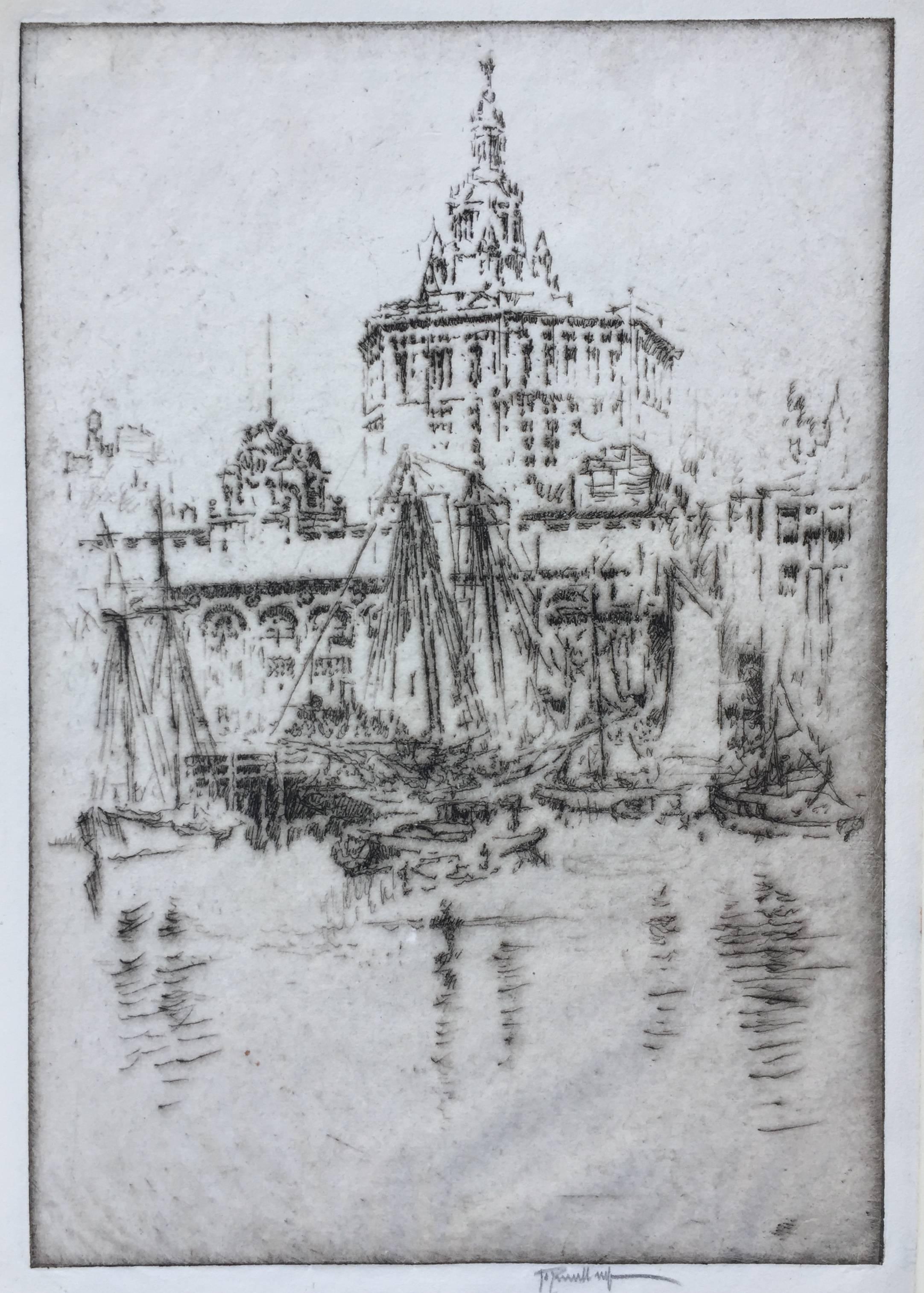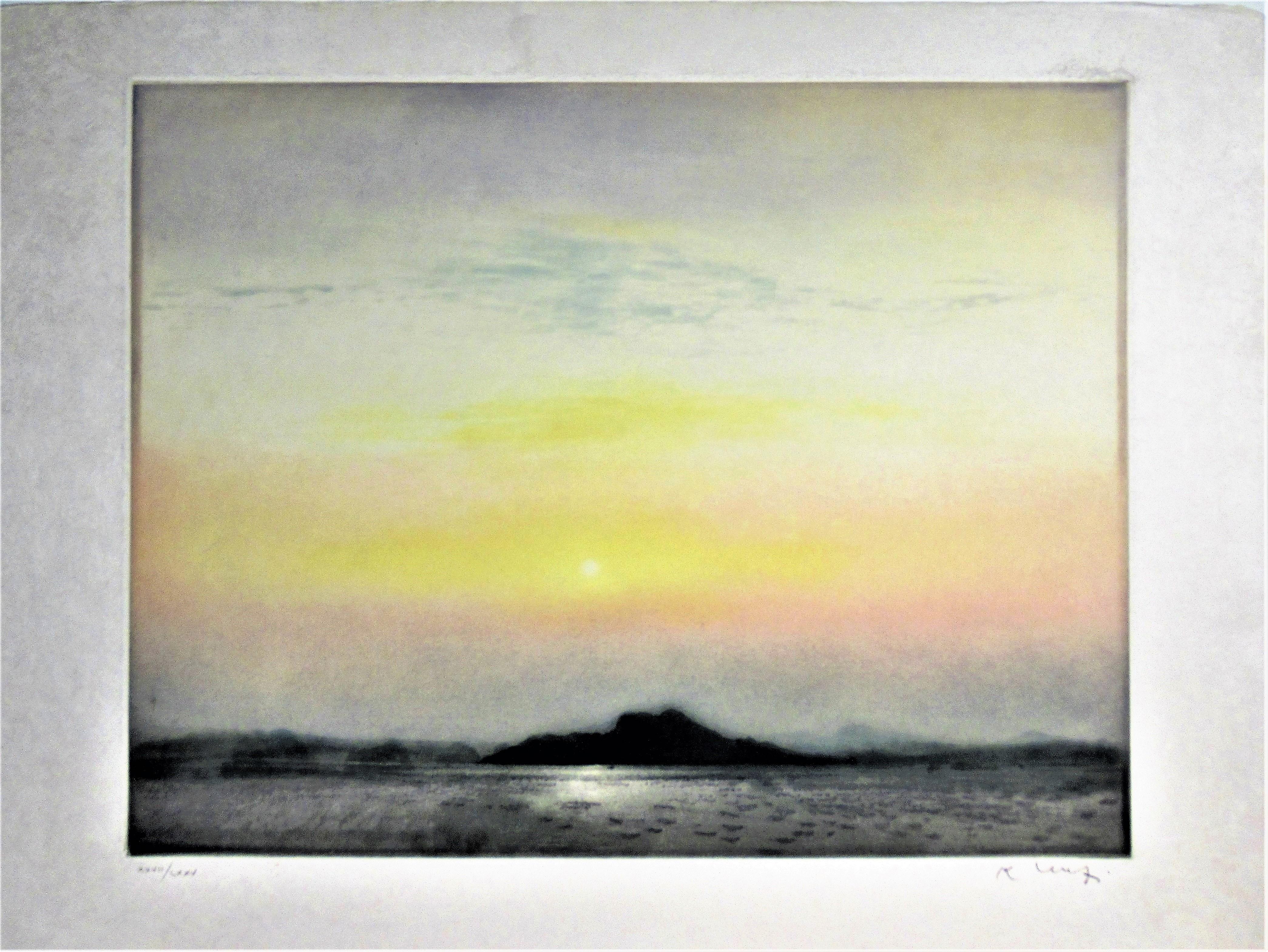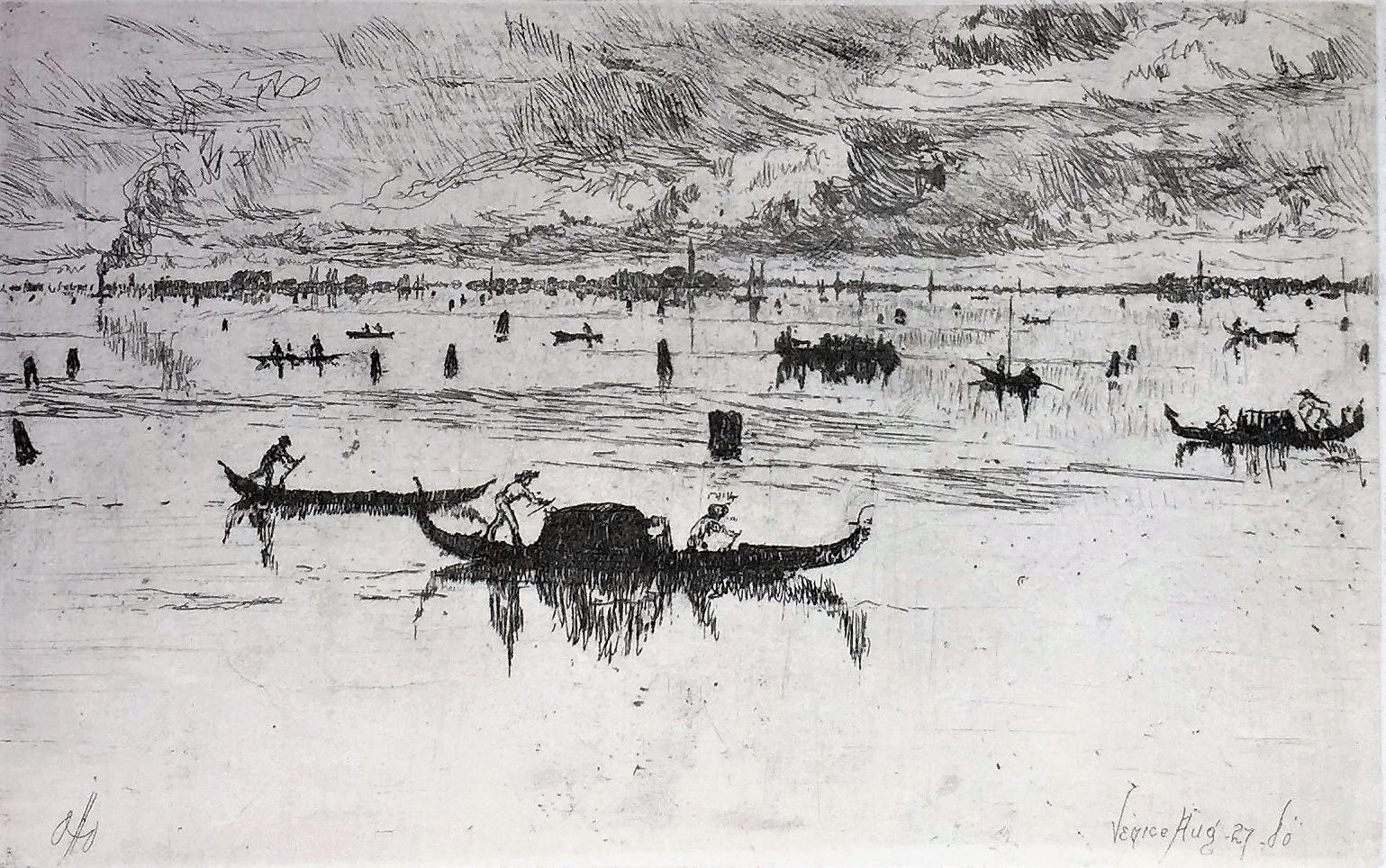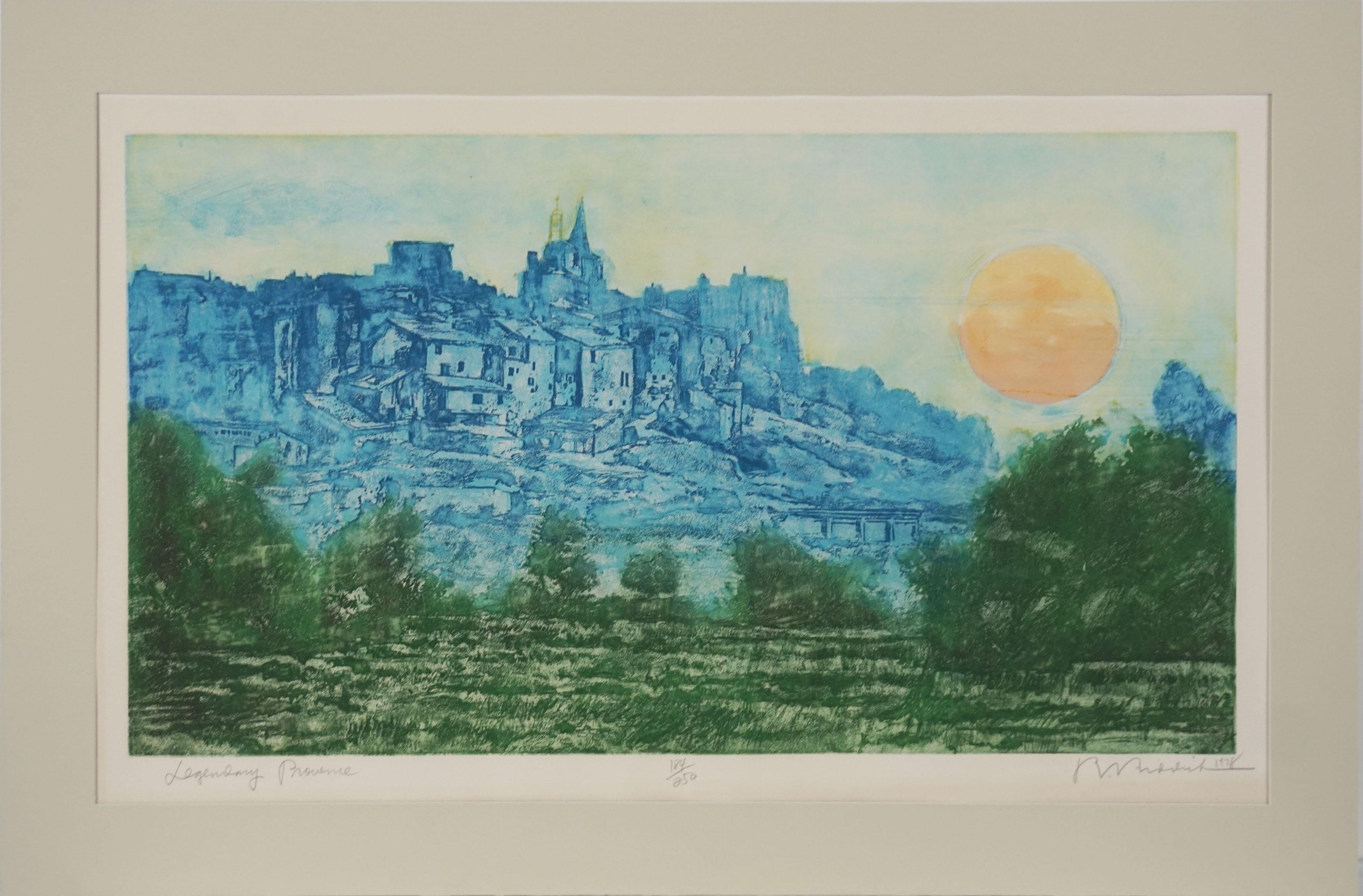Camille PissarroLa rentrée du Berger by Camille Pissarro - Etching1889
1889
About the Item
- Creator:Camille Pissarro (1831-1903, French)
- Creation Year:1889
- Dimensions:Height: 3 in (7.6 cm)Width: 4.3 in (10.9 cm)
- Medium:
- Movement & Style:
- Period:
- Condition:
- Gallery Location:London, GB
- Reference Number:1stDibs: LU261214154482
Camille Pissarro
Camille Pissarro was one of the most influential members of the French Impressionist movement and the only artist to participate in all eight Impressionist exhibitions.
Born in July of 1830 on the island of Saint Thomas in the Danish West Indies, Camille was the son of Frédéric and Rachel Pissarro. At the age of 12, he went to school in Paris, where he displayed a penchant for drawing. He returned again to Paris in 1855, having convinced his parents to allow him to pursue a career as an artist rather than work in the family import/export business. Camille studied at the Académie Suisse alongside Claude Monet, and, during this time, he met Paul Cézanne, Édouard Manet and Pierre-Auguste Renoir.
In 1869, Camille settled in Louveciennes. The outbreak of the Franco-Prussian War in 1870 prompted him to move to England, and, with Monet, Camille painted a series of landscapes around Norwood and Crystal Palace, while studying English landscape painting in the museums. Upon returning a year later at the end of the War to Louveciennes, Camille discovered that only 40 of his 1,500 paintings — almost 20 years’ work — remained undamaged.
Camille settled in Pontoise in the summer of 1871, remaining there and gathering a close circle of friends around him for the next 10 years. He reestablished relationships with Cézanne, Manet, Monet, Renoir and Edgar Degas, expressing his desire to create an alternative to the Salon, so that their group could display their own unique styles. Camille married Julie Vellay, with whom he would have seven children. Cézanne repeatedly came to stay with them, and, under Camille’s influence, he learned to study nature more patiently, even copying one of Camille’s landscapes in order to learn his teacher’s technique.
The first Impressionist group exhibition, initiated by Monet in 1874, earned the Impressionists much criticism for their art. While mainly interested in landscape, Camille introduced people — generally, peasants going about their rural occupations — and animals into his works, and they often became the focal point of the composition. It was this unsentimental and realistic approach, with the complete absence of any pretense, which seemed to stop his work from finding appreciation in the general public.
One of the few collectors who did show interest in Camille’s work was a bank employee named Paul Gauguin, who, after acquiring a small collection of Impressionist works, turned to Camille for advice on becoming a painter himself. For several years, Gauguin closely followed his mentor, and, although their friendship was fraught with disagreement and misunderstandings, Gauguin still wrote shortly before Camille’s death in 1906: “He was one of my masters, and I do not deny him.”
In the 1880s, Camille moved from Pontoise to nearby Osny, before Eragny, a small village much further from Paris. At a time when he was dissatisfied with his work, in 1885, Camille met both Paul Signac and Georges Seurat. He was fascinated by their efforts to replace the intuitive perceptive approach of the Impressionists with a “Divisionist” method, or scientific study of nature’s phenomena based on optical laws. Despite having reached his mid-50s, Camille did not hesitate to follow the two young innovators. The following year, he passed on this new concept to Vincent Van Gogh, who had just arrived in Paris and was keen to learn of the most recent developments in art. However, after a few years, Camille felt restricted by Seurat’s theories and returned to his more spontaneous technique while retaining the lightness and purity of color acquired during his Divisionist phase.
In the last years of his life, Camille divided his time between Paris, Rouen, Le Havre and Eragny, painting several series of different aspects of these cities, with varying light and weather effects. Many of these paintings are considered among his best and make for an apt finale to his long and prodigious career.
When Camille Pissarro died in the autumn of 1903, he had finally started to gain public recognition. Today his work can be found in many of the most important museums and collections throughout the world.
Find original Camille Pissarro art on 1stDibs.
(Biography provided by Stern Pissarro Gallery)
- ShippingRetrieving quote...Ships From: London, United Kingdom
- Return PolicyA return for this item may be initiated within 7 days of delivery.
- Effet de pluie by Camille Pissarro - Landscape etchingBy Camille PissarroLocated in London, GBEffet de pluie by Camille Pissarro (1830-1903) Etching, aquatint and drypoint 15.9 x 21.3 cm (6 ¹/₄ x 8 ³/₈ inches) Stamped with initials C.P. lower left and numbered 7/14 lower righ...Category
1870s Impressionist Landscape Prints
MaterialsDrypoint, Etching, Aquatint
- Series - South of France by Lélia Pissarro, SerigraphBy Lelia PissarroLocated in London, GBSeries - South of France by Lélia Pissarro (B. 1963) Serigraph Image Size: 38 x 48 cm (15 x 19 inches) Sheet Size: 48 x 59 cm (18 ⅞ x 23 ¼ inches) Signed and numbered Printed in an edition of 300 SOLD UNFRAMED Artist's Biography Born in Paris in 1963, Lélia is the third and youngest child of Hugues-Claude and Katia Pissarro...Category
21st Century and Contemporary Impressionist More Prints
MaterialsScreen
- Le Village de Landel by Paulémile Pissarro - etchingLocated in London, GBSOLD UNFRAMED Le Village de Landel by Paulémile Pissarro (1884 - 1972) Etching 17.2 x 23.7 cm (6 ¾ x 9 ⅜ inches) Signed lower right, Paulémile-Pissarro and numbered lower left, 2e e...Category
20th Century Post-Impressionist Landscape Prints
MaterialsEtching
- Jardin de la Villa à Brantôme by Paulémile Pissarro - Etching PrintLocated in London, GB*UK BUYERS WILL PAY AN ADDITIONAL 20% VAT ON TOP OF THE ABOVE PRICE Jardin de la Villa à Brantôme by Paulémile Pissarro (1884 - 1972) Etching 20.5 x 28.5 cm (8 ⅛ x 11 ¼ inches) Sign...Category
20th Century Landscape Prints
MaterialsEtching
- Veronique on the Pass by Lélia Pissarro - Coloured etchingBy Lelia PissarroLocated in London, GBVeronique on the Pass by Lélia Pissarro (b. 1963) Coloured etching 9.5 x 12 cm (3 ³/₄ x 4 ³/₄ inches) Signed lower left, Lélia Pissarro Numbered lower right, 1/15 Artist biography: Born in Paris in 1963, Lélia is the third and youngest child of Hugues-Claude and Katia Pissarro...Category
21st Century and Contemporary Landscape Prints
MaterialsColor, Etching
- Quai Boïeldieu, à Rouen by Camille Pissarro - Landscape lithographBy Camille PissarroLocated in London, GBQuai Boïeldieu, à Rouen by Camille Pissarro (1830-1903) Lithograph 27.7 x 36 cm (10 ⁷/₈ x 14 ¹/₈ inches) Stamped lower left and numbered lower right, 8/14 Executed circa 1896 Delteil...Category
1890s Post-Impressionist Landscape Prints
MaterialsLithograph
- New Fish Market - NEW YORKBy Joseph PennellLocated in Santa Monica, CAJOSEPH PENNELL (1857 - 1926) NEW FISH MARKET - (NEW YORK) 1921 (W 797) Etching, Signed in pencil, edition probably 50. 9 7/8 x 6 7/8 inches. Full sheet, ...Category
1920s American Impressionist Landscape Prints
MaterialsEtching
- Birch Grove, Signed Etching by Harvey KidderBy Harvey KidderLocated in Long Island City, NYBirch Grove Harvey Kidder, American (1918–2001) Date: circa 1985 Aquatint Etching, Signed and numbered in Pencil Edition of 150 Size: 33 in. x 29.5 in. (83.82 cm x 74.93 cm)Category
1980s American Impressionist Landscape Prints
MaterialsEtching
- SeascapeBy Kaiko MotiLocated in San Francisco, CAThis artwork "Seascape" c.1965 is an original color aquatint on Japan paper by noted Indian artist Kaiko Moti, 1921-1989. It is hand signed and numbered XXVII/LXXV in pencil by the a...Category
Mid-20th Century Impressionist Landscape Prints
MaterialsAquatint
- Laguna Veneta.By Otto Henry BacherLocated in Storrs, CTLaguna Veneta. 1880. Etching. 5 x 7 1/4 (sheet 8 3/4 x 11 1/4). Venetian series, #22. A rich impression printed on chine collé mounted on white wove paper. Printing fold in the right-hand margin, well outside the image. Signed 'Otto' and dated 'August 23 80' in the plate; "Otto H. Bacher" in pencil. A similar impression is in the Hood Museum of Art, Dartmouth, New Hampshire. Housed in a 16 x 20-inch archival mat, suitable for framing. The view is looking towards the Salute. Laguna Veneta is the bathing ground where Whistler practiced diving. Otto Henry Bacher was a book illustrator and etcher. He joined a colony of American painters established by Frank Duveneck in Polling, Bavaria. In 1880 the 'Duveneck boys', a group that also included John White Alexander...Category
19th Century American Impressionist Landscape Prints
MaterialsEtching
- Provence, France Fine Art Aquatint Etching - “Legendary Provence"Located in Soquel, CAFine Art Aquatint Etching of Gordes, in Provence, France - "Legendary Provence" by Ronald Stephen Riddick Beautiful aquatint etching of a sunset over iconic Provence French town, Go...Category
1970s American Impressionist Landscape Prints
MaterialsPaper, Aquatint
- The Little Wheelwright'sBy James Abbott McNeill WhistlerLocated in Storrs, CTThe Little Wheelwright's. 1886. Etching. Kennedy 245; Glasgow 242. 2 1/2 x 3 3/4 (sheet 5 1/8 x 6 1/8). There was no lifetime edition. Glasgow lists only 13 other known impressions. A fine impression printed in black ink on white laid paper. Monogrammed with the butterfly in the plate. Housed in a 10 X 11 1/2 X 1-inch gold leaf period carved Celtic...Category
Mid-19th Century American Impressionist Figurative Prints
MaterialsEtching




